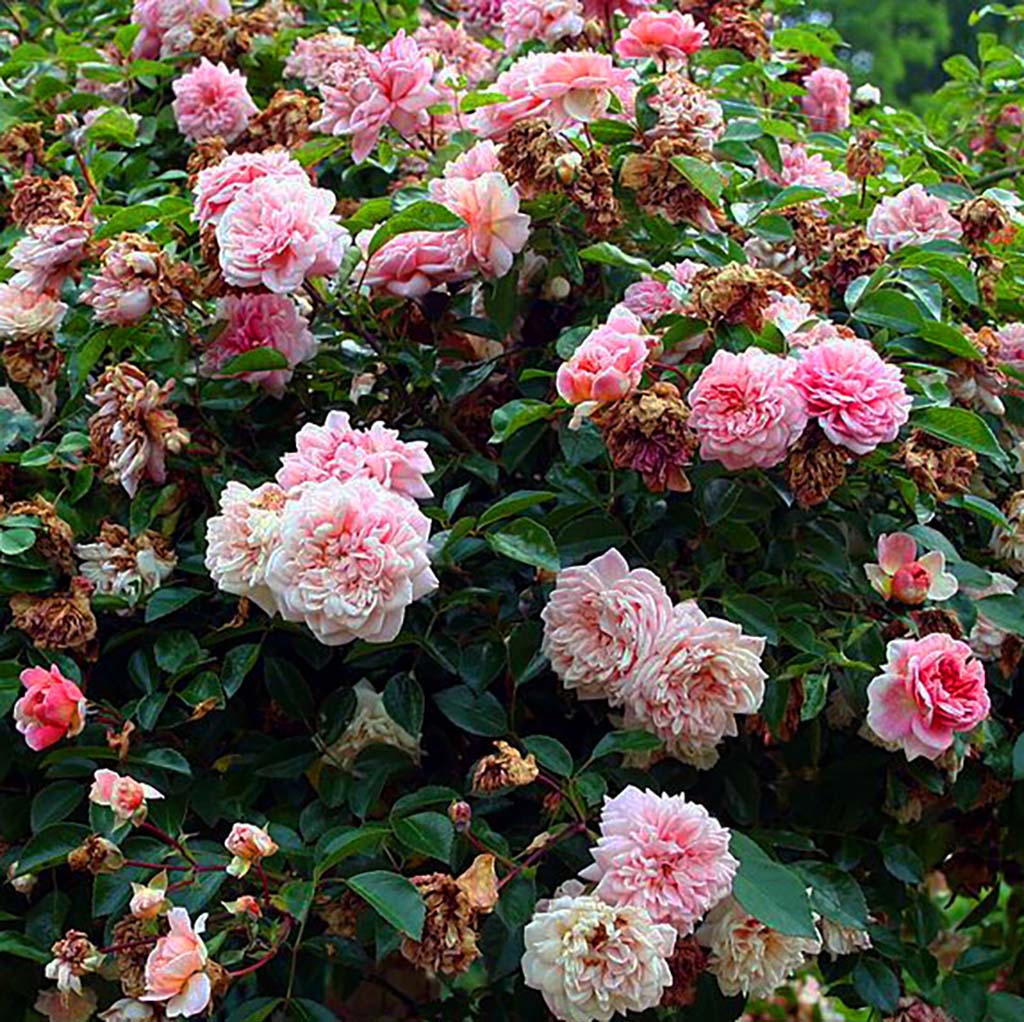
Maldives
Pink Rose
Rosa polyantha

General Description / Cultural Significance
The tropical Maldives are a series of coral islands and sandbanks. Though the soil is generally poor and sandy, small rain forests thrive on the larger, more fertile islands such as the island of Fuvahmulah. Here, farmers cultivate a wide range of crops including citrus, watermelon, yams, and taro. The Pink Rose, Rosa polyantha, is a plant commonly grown by local Maldivians, a flower whose beauty and fragrance has become synonymous with the vibrancy of the Maldives. Known throughout the country as “Finifenmaa,” the Pink Rose is the country’s national flower, cultivated in the public gardens and pots of Maldivian homesteads.
The Pink Rose plays an important role in the religious practices of Maldivians who are a mostly Muslim people. Its strong, sweet scent is regarded as the essence of the human soul, able to carry spiritual messages to and from Allah. Rose is used in weddings and funerals as symbolic decoration and for its fragrance in bouquets and Rose water bowls. Ancient Islamic herbalists from around the world played a large part in integrating Rosa into common herbalism. For instance, traditional Islamic medicine tells of an eye salve made from Rose water and other essential oils, as well as a powder made of clay, Rose, and other spices, which treated a variety of ailments such as diabetes. Ancient Muslims were some of the first to include Rose in syrups for cooking, adding fragrance, a sweet taste, and nutrition to any meal or desert.
Climate Change / Conservation Status
While tourists flock from around the world for a momentary experience of the Maldives’ pristine beaches and vibrant flora, the Maldivian people have seen another side to the country’s tropical and remote allure. Climate change is a real and ever encroaching threat to the Maldives whose thousands of coral islands make up the lowest lying country in the world. By 2050, nearly eighty percent of the Maldives is projected to be swallowed by sea level rise if the current rate of global warming continues. These islands house local Maldivians, far from the security and resources of resort hotels. They face constant erosion, flooding, and lack of access to ground water. Coral bleaching is killing the island’s reefs, which are both important tourist draws and critical pillars of the ecosystem. Without them, the coasts are completely open and vulnerable to rising waters, with no protection against strong waves and severe weather.
The Maldives is committed to adapting to the realities of climate change. A reclamation project in the form of an artificial, floating island called Hulhumalé was designed in 1997 to house Maldivians living in the very densely populated capital of Malé. Today, Hulhumalé has grown to provide residence for nearly 50,000 Maldivians. This new space has served to alleviate some of the pressures of population growth and territory loss caused by global warming, land erosion, and shifting weather patterns. However, the vulnerability of the Maldives and the intensifying impacts of climate change continue to turn Maldivians into international climate refugees. The government is now considering purchasing land in countries with a higher elevation for the people of the Maldives to immigrate to as their island homes become more and more dangerous.
This need for the people of the Maldives to leave the islands they’ve known to be home for generations is a harsh example of the people and places on earth for whom climate change is an immediate and daily, life-threatening reality. If climate change cannot be reversed, even the Pink Rose, which brings so much life and vitality to the religious and personal lives of Maldivians, will be gone. With this disappearing aromatic flora and the movement of the Maldivian people off their land, an entire culture is displaced. Meanwhile, a once healthy, robust, tropical ecosystem is continually encroached upon and altered at the hands of human-induced climate change.
Alternate Names
Finifenmaa
Sources
Aggarwal, R., 2019. Most popular flowers in the Muslim religion. Aquila Style. [website]
The Editorial Team, 2009. Botany, herbals and healing in Islamic science and medicine. Muslim Heritage. [website]
Encyclopaedia Britannica, 2022. Maldives. The Encyclopedia Britannica. [website]
Hopler, W., 2019. The spiritual symbolism of roses. Learn Religions. [website]
Manzo, D. et al., 2021. Facing dire sea level rise threat, Maldives turns to climate change solutions to survive. ABC News. [website]
Mia, 2018. Fauna and Flora of the Maldives. The Maldives Expert. [website]
Minivan News, 2015. President Yameen calls on youth to relocate to Hulhumalé. Minivan News. [website]
Nivedha, 2020. Flora and fauna in Maldives for a wild holiday. Holidify. [website]
The Office of the Ambassador, Permanent Mission of the Republic of Maldives to the United Nations. This statement can be found on the World Sensorium original website.

